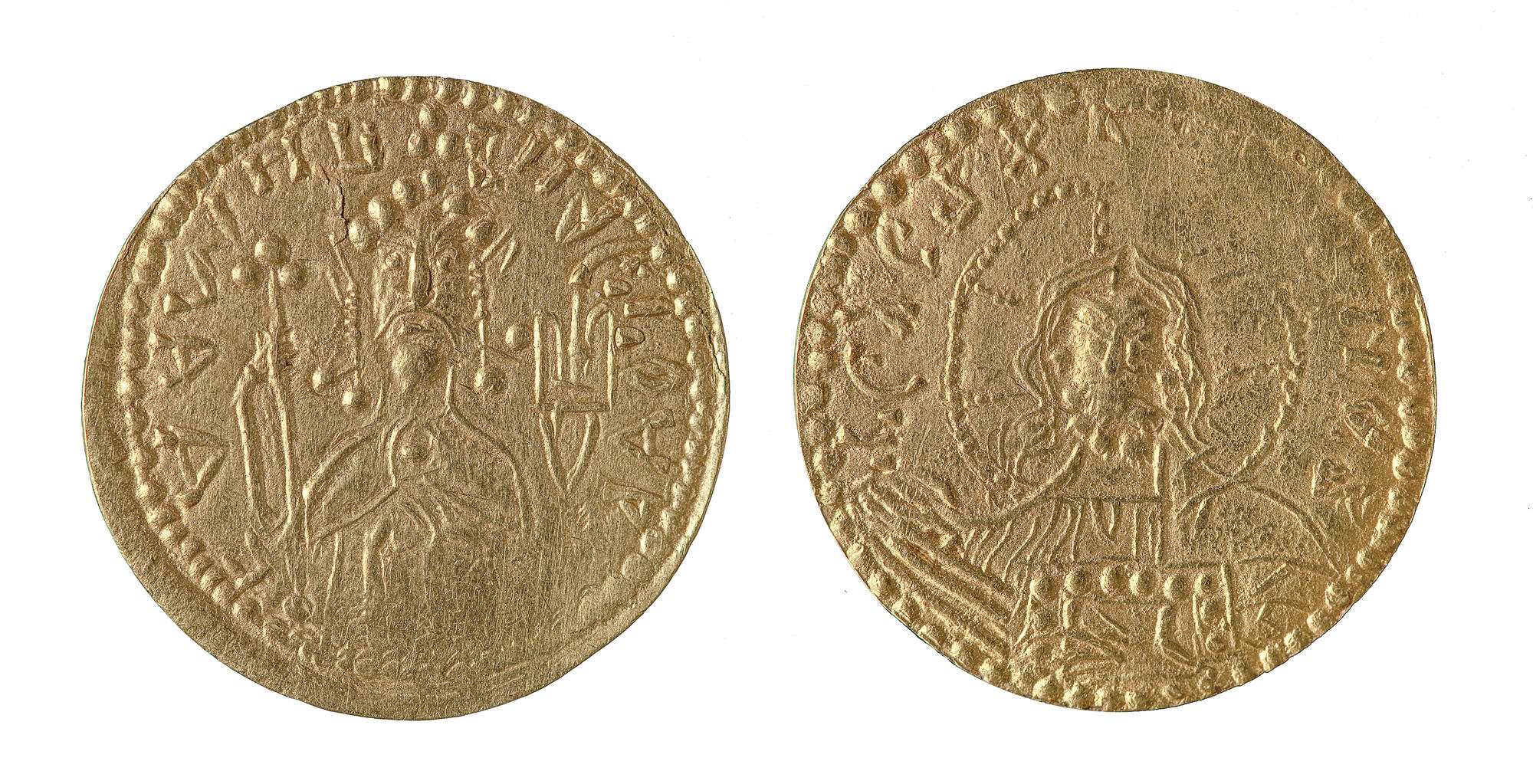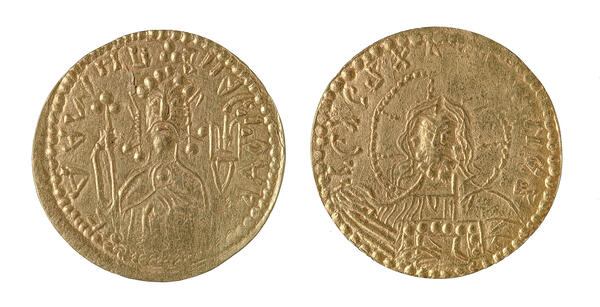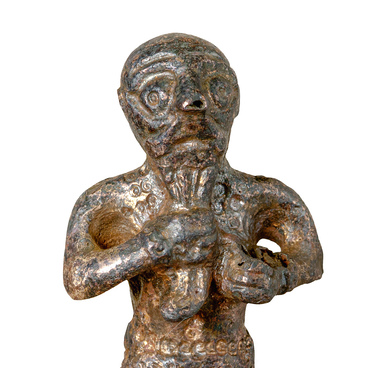The gold coin — zlatnik — of Prince Vladimir was the first Russian coin to be minted in Kievan Rus after the adoption of Christianity as the state religion in 988. The minting of silver coins began concurrently. In terms of design and weight, the first Russian coins imitated the Byzantine ones.
The gold coin features the oldest Russian portrait, which fairly accurately reproduces the features of Prince Vladimir, as his contemporaries described him: “with bushy eyebrows… a flat nose, with a shaved beard and thick long hair hanging over the upper lip.”
Prince Vladimir Svyatoslavich was Princess Olga’s grandson, the third son of Prince Svyatoslav. After Svyatoslav’s death, his eldest son Yaropolk became the Grand Prince of Kiev. His brother Oleg took over the Drevlian territory.
Vladimir, whose mother was Svyatoslav’s servant Malusha and the key keeper of Princess Olga, was made prince of Novgorod. Five years later, a civil war began between the brothers, Yaropolk defeated Oleg’s Drevlian druzhinas (military retinues). Oleg himself died in battle. Vladimir fled “across the sea”, from where he returned two years later with a hired Varangian druzhina. Yaropolk was killed. Vladimir became the Grand Prince of Kiev.
Under Prince Vladimir, all lands of the Eastern Slavs were united as part of Kievan Rus. One of the most important tasks of that time was solved: ensuring that the Russian lands were protected from raids of the Pechenegs, nomadic tribes. In 988, Christianity was adopted as the state religion. The baptism of Vladimir and his druzhina took place in Korsun (Chersonesus) — the center of the Byzantine possessions in Crimea. First, Vladimir was baptized, then he baptized his boyars, and his whole people.
The adoption of Christianity was the starting point for the spread of literacy and development of writing system, which was of great importance for the Russian culture: it was influenced by the Byzantine culture, and through it, the cultures of Classical Greece and Rome. The adoption of Christian Orthodoxy became one of the determining factors in the further historical development of the Old Russian state. Vladimir was canonized by the church as a saint and is called equal-to-the-Apostles for his contributions to the Christianization of Russia.
The gold coin features the oldest Russian portrait, which fairly accurately reproduces the features of Prince Vladimir, as his contemporaries described him: “with bushy eyebrows… a flat nose, with a shaved beard and thick long hair hanging over the upper lip.”
Prince Vladimir Svyatoslavich was Princess Olga’s grandson, the third son of Prince Svyatoslav. After Svyatoslav’s death, his eldest son Yaropolk became the Grand Prince of Kiev. His brother Oleg took over the Drevlian territory.
Vladimir, whose mother was Svyatoslav’s servant Malusha and the key keeper of Princess Olga, was made prince of Novgorod. Five years later, a civil war began between the brothers, Yaropolk defeated Oleg’s Drevlian druzhinas (military retinues). Oleg himself died in battle. Vladimir fled “across the sea”, from where he returned two years later with a hired Varangian druzhina. Yaropolk was killed. Vladimir became the Grand Prince of Kiev.
Under Prince Vladimir, all lands of the Eastern Slavs were united as part of Kievan Rus. One of the most important tasks of that time was solved: ensuring that the Russian lands were protected from raids of the Pechenegs, nomadic tribes. In 988, Christianity was adopted as the state religion. The baptism of Vladimir and his druzhina took place in Korsun (Chersonesus) — the center of the Byzantine possessions in Crimea. First, Vladimir was baptized, then he baptized his boyars, and his whole people.
The adoption of Christianity was the starting point for the spread of literacy and development of writing system, which was of great importance for the Russian culture: it was influenced by the Byzantine culture, and through it, the cultures of Classical Greece and Rome. The adoption of Christian Orthodoxy became one of the determining factors in the further historical development of the Old Russian state. Vladimir was canonized by the church as a saint and is called equal-to-the-Apostles for his contributions to the Christianization of Russia.



